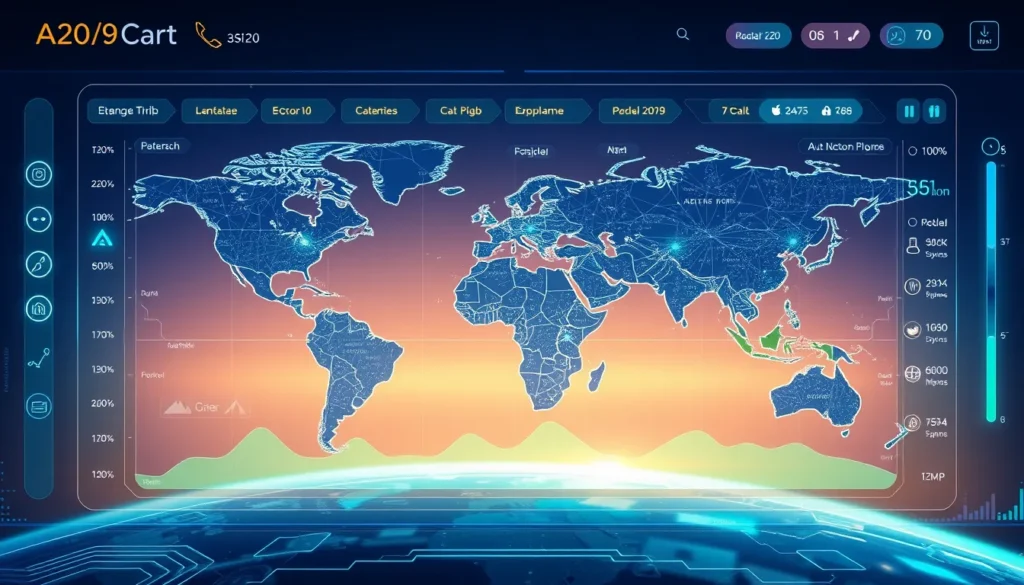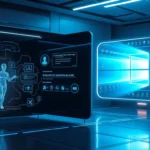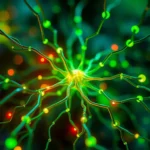Now Reading: Powerful AI in Healthcare Diagnostics: Boosting Patient Care
-
01
Powerful AI in Healthcare Diagnostics: Boosting Patient Care
Powerful AI in Healthcare Diagnostics: Boosting Patient Care

Powerful AI in Healthcare Diagnostics: Boosting Patient Care
In recent years, technological advancements have greatly influenced the healthcare industry. AI in healthcare diagnostics is at the forefront of this transformative change. As medical institutions integrate artificial intelligence into their diagnostic procedures, the potential for vastly improved patient outcomes becomes more evident. This article explores the dynamic role of AI in healthcare diagnostics, its benefits, challenges, and future perspectives.
The Rise of AI in Healthcare Diagnostics
The integration of artificial intelligence in healthcare has led to revolutionary changes in patient care. From improving medical imaging to enhancing diagnostic speed, AI in healthcare diagnostics is a growing trend. Hospitals and clinics worldwide are leveraging machine learning algorithms to analyze complex data sets, detect early signs of diseases, and predict potential health complications. With search trends showing an increasing demand for AI diagnostic solutions, it is clear that this technology is becoming an essential component of modern medicine.
Enhancing Diagnostic Accuracy with AI
One of the most significant advantages of incorporating AI in healthcare diagnostics is the enhancement of diagnostic accuracy. By providing thorough data analysis, AI aids physicians in identifying conditions that might be overlooked in traditional diagnostic methods. For example:
- Improved Medical Imaging: AI-powered imaging analysis tools help radiologists detect subtle anomalies in X-rays and MRIs. These tools not only improve accuracy but also reduce the time needed for diagnosis.
- Predictive Analytics: With the ability to analyze vast data, AI assists in predicting the progression of diseases, thus facilitating early intervention.
- Continuous Learning: Machine learning models constantly refine their algorithms by learning from new data, ensuring that diagnostics remain current with the latest medical research.
How AI Improves Diagnostic Accuracy
The convergence of AI technologies and healthcare diagnostics opens up several possibilities:
- Faster Diagnoses: AI systems can quickly analyze diagnostic tests, providing quicker responses than traditional methods. Rapid diagnosis is crucial in emergency cases where time is of the essence.
- Better Patient Outcomes: With improved accuracy, the likelihood of misdiagnosis is reduced, leading to more effective treatments and better health outcomes for patients.
- Cost Efficiency: By automating routine tasks and reducing the need for repeat tests, AI helps in cutting down costs for both healthcare providers and patients.
Many healthcare institutions are now adopting AI-powered tools. For further reading and to understand more about innovative healthcare technologies, visit the U.S. Department of Health and Human Services at https://www.hhs.gov.
Overcoming Challenges in AI Diagnostics
Despite its benefits, integrating AI in healthcare diagnostics comes with a set of challenges:
- Data Privacy: Handling of sensitive patient data requires robust security measures. Healthcare providers must follow stringent data protection regulations such as HIPAA in the United States.
- Integration Issues: Incorporating AI systems into existing hospital infrastructures can be complex and costly. Successful integration requires collaboration between IT experts and healthcare professionals.
- Regulatory Barriers: As AI technologies evolve rapidly, regulatory frameworks struggle to keep pace, potentially delaying the adoption of new advancements.
Addressing these challenges is vital for successfully harnessing the full potential of AI. Institutions across the globe are actively working to overcome these hurdles, ensuring the technology’s benefits can be realized on a larger scale.
The Future of AI in Healthcare Diagnostics
Looking ahead, the impact of AI in healthcare diagnostics is expected to grow even further. Future developments could include advanced algorithms that predict outbreaks, smarter AI systems that provide personalized treatment recommendations, and fully automated diagnostic labs. With an increasing number of studies and investments, the role of AI will likely expand, ushering in a new era where technology and medicine work hand-in-hand.
Here are some key future trends to watch out for:
- Integration of AI with Remote Healthcare: With the rise of telemedicine, AI diagnostic tools are becoming more accessible, allowing remote analysis and consultations.
- Enhanced Disease Prediction: AI could soon become a standard tool in predicting diseases before symptoms appear, offering longer lead times for preventive care.
- Global Collaboration: International efforts are underway to create shared databases, improving AI algorithms by increasing the quantity and diversity of data used for training.
For more detailed insights into the future of AI in health, the World Health Organization (WHO) provides excellent resources at https://www.who.int.
Conclusion
AI in healthcare diagnostics is not just a technological trend—it is a transformative force reshaping modern medicine. By improving diagnostic accuracy, speeding up treatment initiation, and enabling cost efficiencies, AI is set to revolutionize patient care. Although challenges remain regarding data security, system integration, and regulatory acceptance, the potential benefits far outweigh these obstacles. As the industry continues to innovate, patients and healthcare providers alike can look forward to more reliable, accurate, and efficient diagnostics.
Embracing these advancements will be crucial for medical institutions aiming to offer high-quality care in an increasingly digital world. With continuous research and development, AI in healthcare diagnostics is poised to become a cornerstone of medical practice, ensuring that the future of healthcare is both smart and patient-centered.
In summary, the journey of integrating AI into diagnostics is an ongoing evolution. With thoughtful implementation and overcoming current barriers, AI will continue to empower healthcare professionals, ultimately leading to improved patient outcomes and a healthier society.
For additional resources and ongoing updates on AI in healthcare diagnostics, consider subscribing to reputable medical technology journals and following related news on trusted platforms.
Learn more about Healthcare Technology Trends | World Health Organization

























